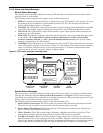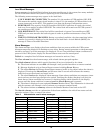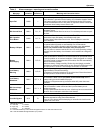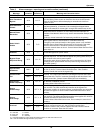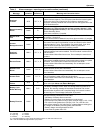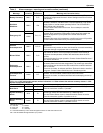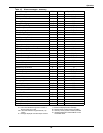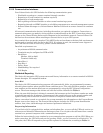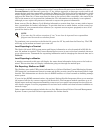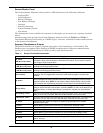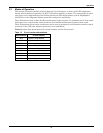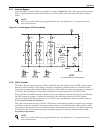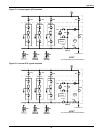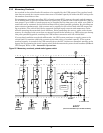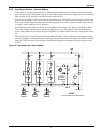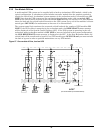
Operation
71
For example, to see a copy of information on the Present Status Report screen from the SCC (see
Present Status in this manual), press the “A” key (either uppercase or lowercase can be used for all
except the date and time commands) and then the Enter key. The Series 610 will send the data, which
will be displayed on your screen. To see the Present Status Report screen from, say, Module 1, type A1
and press the Enter key. Please note that the data on the screen is like a snapshot—the status of the
UPS at the moment you requested the information. The information sent remotely is not updated,
although you can repeat the process at intervals to request the present information.
Some screens, like the Battery Cycle Monitor information, contain data that you may wish to import
into a spreadsheet for further calculations. To put this data into a usable format, use the screen-cap-
ture feature of your communications software (or a separate screen-capture program) to save all or
part of the data to disk.
To terminate your connection to the Series 610, press the “H” key and then the Enter key. The UPS
will hang up its modem and await your next call.
Local Reporting to a Terminal
The Series 610 sends UPS system status and history information to a local terminal in RS-232 for-
mat. No modem is required. The Present Status Report screen is sent to the local terminal whenever
a new alarm occurs. Commands for requesting information and for changing the date and time are in
Table 10.
Local Reporting to a Monitor
A monitor connected to this port will display the same alarm information being sent to the local ter-
minal. This monitor does not display information going out through the modem port.
Site Reporting: SiteScan or SNMP
The SiteScan port sends UPS system information to a Liebert SiteScan Central Monitoring System.
UPS operation, environmental control systems and facility security can all be monitored from a single
location. This information can also be sent via SNMP interface to a local network or building manage-
ment system.
If your site has SNMP communications, the optional Liebert SiteNet Integrator allows you to monitor
the status of all the dry-contact outputs of the Series 610. The Integrator module monitors up to 10
digital inputs and two temperature/humidity sensors and can control two external devices with con-
tact closure outputs. It can be programmed to activate local audible and visual alarms in addition to
network “traps.”
Other communications options include the use of an Ethernet-based Liebert Network Management
System. Contact your local Liebert representative for further details.
NOTE
If you save the file with an extension of “.txt,” it can then be imported into a spreadsheet
program and converted to worksheet format.



